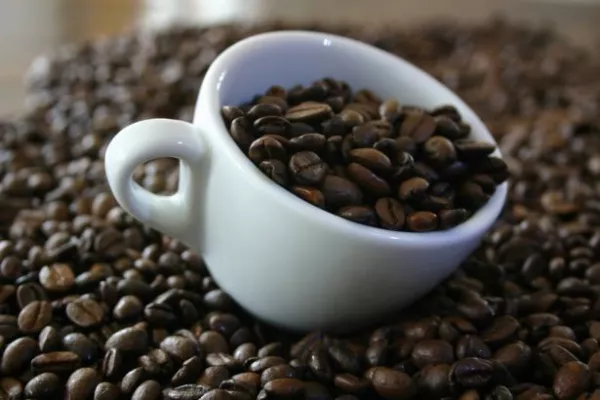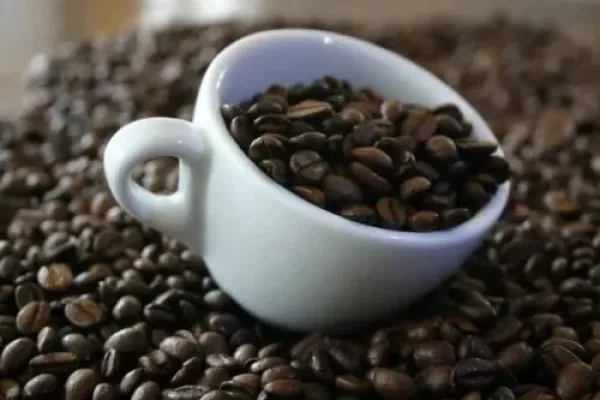Latte lovers, beware. The beans used to make the caffeinated delight are suffering through a terrible drought in Brazil.
In the state of Espirito Santo, the land is so parched that the government has restricted water used to irrigate farms for months. As waterways dried further, the regulations got extended and even stricter in August, and in some areas farmers are prohibited from pumping any water from rivers to their fields. The region is Brazil’s top grower of robusta beans -- the variety used in espresso and instant coffee.
To understand how destructive the dry weather can be for crops, look no further than Moyses Alvino Covre, a fourth-generation farmer who’s planted 2,500 hectares (6,178 acres) of robusta across eight farms in the northern part of the state. At half the fields, water pumps are locked by the government, which means he can’t irrigate his fields at all. At the other half, he’s allowed to irrigate at night, but there is little relief.
“It’s not helping much, because the rivers are dry,” the 57-year-old Covre said, adding that there’s barely enough for drinking. “There’s no water, no rain, and these plants are not growing.”
Futures Rally
Brazil’s robusta harvest will probably tumble 16 percent this year to 9.4 million metric tons, the smallest since 2006, according to the nation’s crop agency Conab. Shrinking output has fueled a 21 percent rally for futures traded in London in 2016, and Societe Generale SA predicts that prices could climb about 30 percent further by the end of next year. Adding to the supply tightness, trees are withering just as total global coffee consumption is forecast by the U.S. government to reach an all-time high.
In Espirito Santo, precipitation in the six months through August was as little as 25 percent of normal in some areas, according to Drew Lerner, the president of World Weather Inc. in Overland Park, Kansas. The lack of moisture coupled with heat accelerated evaporation and extended a multi-year drought, he said. Rains will stay low through September, and while October could bring some improvement, it won’t be enough to rescue crops from the severe conditions, said Alexandre Nascimento, a meteorologist at Climatempo in Sao Paulo.
The prolonged drought means it’s not just this season’s output that will be hampered, but yields and production will probably fall next year, too. Coffee trees are in the beginning of the flowering season, when moisture is desperately needed. The stage in Espirito Santo state usually starts in August and has its most important phase in September.
"Even if it started raining now, it’s unlikely we would have a good harvest next year," said Romario Gava Ferrao, a researcher at the Incaper Institute, run by a state agency in Espirito Santo.
‘Drastic Situation’
A smaller crop from Brazil next season would create a “drastic situation,” said Rodrigo Costa, the coffee-desk director at Societe Generale in New York. Prices that climbed 17 percent over the last 12 months to $1,855 a ton in London will probably keep rising next year, he said. If there’s a “significant” drop in South American output coupled with “troubles elsewhere,” that would push futures to $2,400 by the end of 2017, he predicts.
Dry weather isn’t just limited to Brazil, the No. 2 robusta producer. A lack of rain has also plagued crops in Vietnam, which grows almost half of the world’s supply. Showers through Sept. 10 will stay below normal in the Asian country’s key growing area, a provincial agency said Sept. 1.
Coffee Roasters
While robusta harvests are set to shrink, coffee roasters could choose to use more arabica beans in their blends. The higher-end variety is considered less bitter tasting than robusta and is favored by Starbucks Corp.
A cushion of stockpiles can also help to soften the supply blow and rein in the rally, Rabobank International said in a report this week. As of July 31, U.S. total green-coffee inventory, including arabica and robusta beans, was at the highest since 2003, according to data from the New York-based Green Coffee Association. Brazil’s government in July said it would start selling from state reserves to ease a domestic shortage.
That’s little comfort to farmer Covre. He expects production from his fields will drop to less than 50,000 bags, each weighing 60 kilograms (132 pounds). That’s down from an expected crop of 130,000, he said. Next season will be even worse.
“Next year, I will not harvest 10,000 bags - it will technically be a zero,” he said. Even after pruning about 90 percent of his crops to boost plant recovery, he’s not hopeful. “These pruned trees would start flowering just in 2017 and produce only in 2018,” he said.









